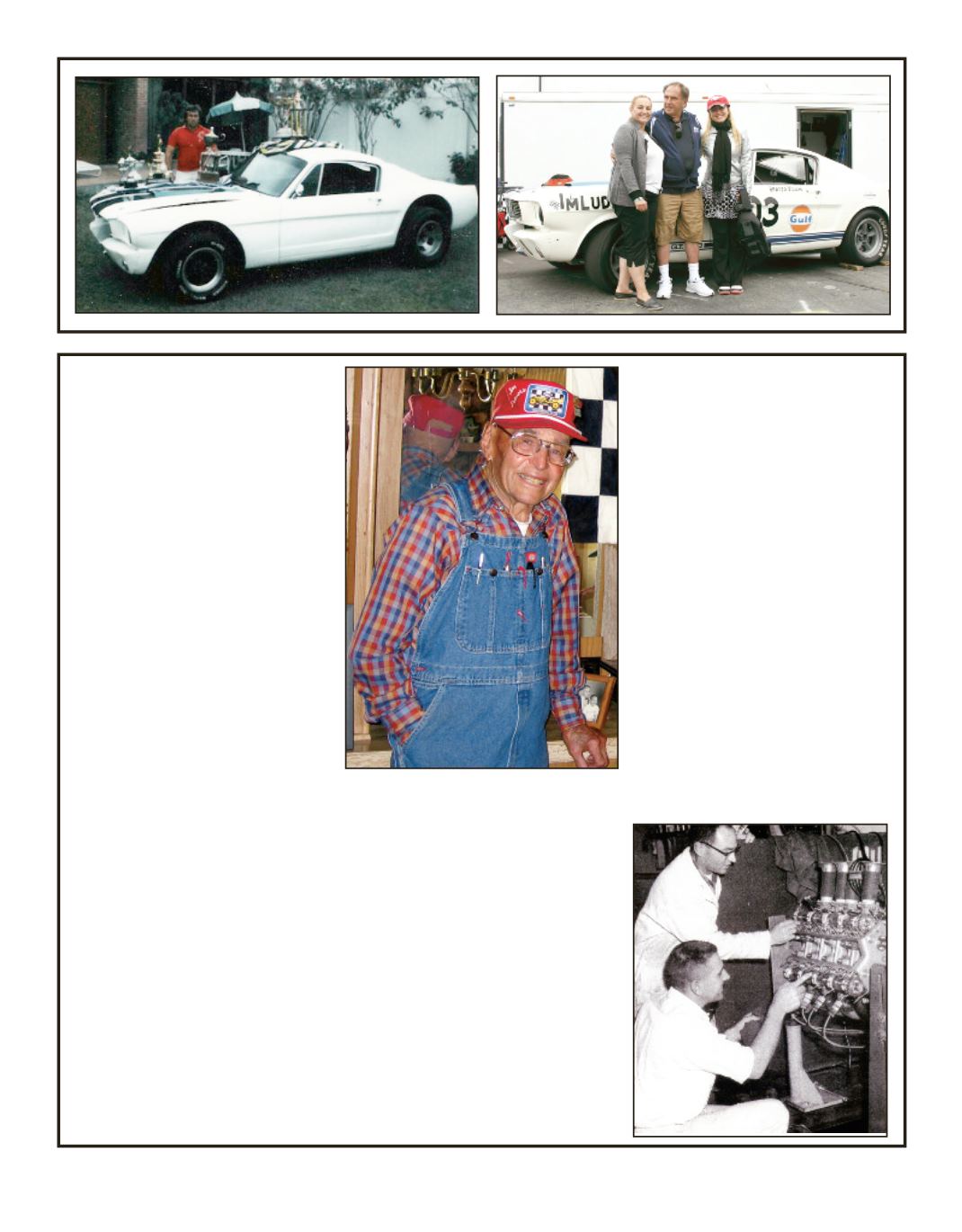

The SHELBY AMERICAN
Fall 2016 85
JIM TRAVERS
February10, 2016
There probably aren’t a lot of
people who recognize the name Jim
Travers. But everyone recognizes
TRACO Engineering, one of the best
known engine shops in southern
California in the 1950s, 1960s and
1970s. Travers was half of that team.
His long time partner, Frank Coons,
was the other half. They supplied
race engines to elite competitors in
the USRRC, Trans-Am, Can-Am and
Formula 5000 who dominated these
series.
Like a lot of the individuals who
eventually found their way into the
upper levels of automobile racing in
the U.S., Travers lived in Los Ange-
les and went to high school in the
1930s. He naturally gravitated to-
wards cars — and building hot rods.
Right after the attack on Pearl Har-
bor, he joined the Army Air Corps
hoping to become a pilot but he
failed the eye test. He went back
later and was accepted to be trained
as a crew chief. He was sent to the
Pacific theater and flew from air-
fields on some of the hardest fought
islands like Saipan, Tinian, Okinawa
and Iwo Jima.
After returning from the war he
went back to racing, starting with
midgets. He teamed up with a
friend, Stu Hilborn, and they exper-
imented with fuel injection. Travers
fabricated and machined parts and
components and soon they were
building Hilborn/Travers fuel injec-
tion systems. They began selling
these systems and initially did well on
circle tracks but on dirt tracks there
were problems. Engines would go lean
and burn pistons and sales suffered.
Travers bailed out to find another
source of income and joined up with
Swede Lindskog to race midgets. Lind-
skog was killed in a racing accident at
Gilmore Stadium and Travers was
then hired by Eddie Haddad. They
were soon working on cars for busi-
nessman Howard Keck. Keck decided
to race at Indianapolis. He would
eventually sell his company to Socony
Mobil and never experienced financial
worries again.
Travers’ focus was Indianapolis
from the 1950s to 1960s. Howard Keck
decided to get out of racing in 1956.
When Travers and Jim Coons got
the call they quietly packed their
tool boxes and walked out of the
shop they had been coming to for
the past seven years, leaving be-
hind the cars they were working
on, tools, machinery and parts.
They did some consulting work and
got a call from Ford, wanting them
to develop a new race engine. At the
meeting, one of the Ford executives
asked them what the name of their
company was. Travers thought
quickly and said, “TRACO.” And
just like that, TRACO Engineering
was born. One early project was
building a Formula 1 engine for
Lance Reventlow.
Travers and Coons began
building race engines based on
Chevy’s new V8 for USAC circle
track cars. GM used their engines
in the Grand Sport Corvettes, re-
sulting in the beginning of the


















